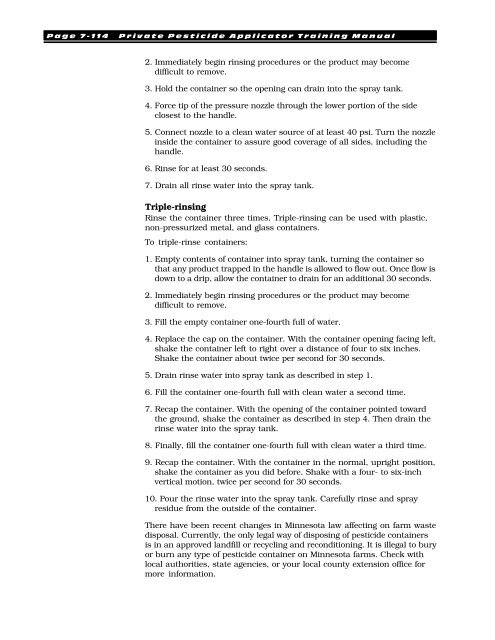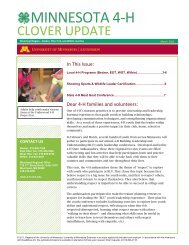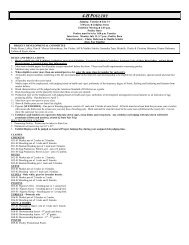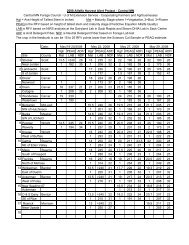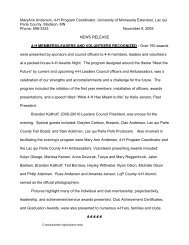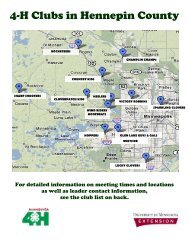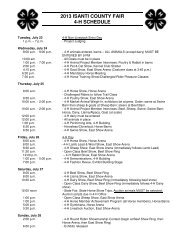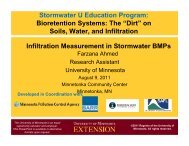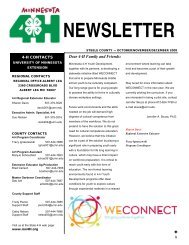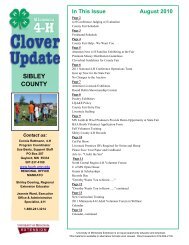Private Pesticide Applicator's Training Manual - University of ...
Private Pesticide Applicator's Training Manual - University of ...
Private Pesticide Applicator's Training Manual - University of ...
Create successful ePaper yourself
Turn your PDF publications into a flip-book with our unique Google optimized e-Paper software.
Page 7-114 <strong>Private</strong> <strong>Pesticide</strong> Applicator <strong>Training</strong> <strong>Manual</strong><br />
2. Immediately begin rinsing procedures or the product may become<br />
difficult to remove.<br />
3. Hold the container so the opening can drain into the spray tank.<br />
4. Force tip <strong>of</strong> the pressure nozzle through the lower portion <strong>of</strong> the side<br />
closest to the handle.<br />
5. Connect nozzle to a clean water source <strong>of</strong> at least 40 psi. Turn the nozzle<br />
inside the container to assure good coverage <strong>of</strong> all sides, including the<br />
handle.<br />
6. Rinse for at least 30 seconds.<br />
7. Drain all rinse water into the spray tank.<br />
Triple-rinsing<br />
Rinse the container three times. Triple-rinsing can be used with plastic,<br />
non-pressurized metal, and glass containers.<br />
To triple-rinse containers:<br />
1. Empty contents <strong>of</strong> container into spray tank, turning the container so<br />
that any product trapped in the handle is allowed to flow out. Once flow is<br />
down to a drip, allow the container to drain for an additional 30 seconds.<br />
2. Immediately begin rinsing procedures or the product may become<br />
difficult to remove.<br />
3. Fill the empty container one-fourth full <strong>of</strong> water.<br />
4. Replace the cap on the container. With the container opening facing left,<br />
shake the container left to right over a distance <strong>of</strong> four to six inches.<br />
Shake the container about twice per second for 30 seconds.<br />
5. Drain rinse water into spray tank as described in step 1.<br />
6. Fill the container one-fourth full with clean water a second time.<br />
7. Recap the container. With the opening <strong>of</strong> the container pointed toward<br />
the ground, shake the container as described in step 4. Then drain the<br />
rinse water into the spray tank.<br />
8. Finally, fill the container one-fourth full with clean water a third time.<br />
9. Recap the container. With the container in the normal, upright position,<br />
shake the container as you did before. Shake with a four- to six-inch<br />
vertical motion, twice per second for 30 seconds.<br />
10. Pour the rinse water into the spray tank. Carefully rinse and spray<br />
residue from the outside <strong>of</strong> the container.<br />
There have been recent changes in Minnesota law affecting on farm waste<br />
disposal. Currently, the only legal way <strong>of</strong> disposing <strong>of</strong> pesticide containers<br />
is in an approved landfill or recycling and reconditioning. It is illegal to bury<br />
or burn any type <strong>of</strong> pesticide container on Minnesota farms. Check with<br />
local authorities, state agencies, or your local county extension <strong>of</strong>fice for<br />
more information.


